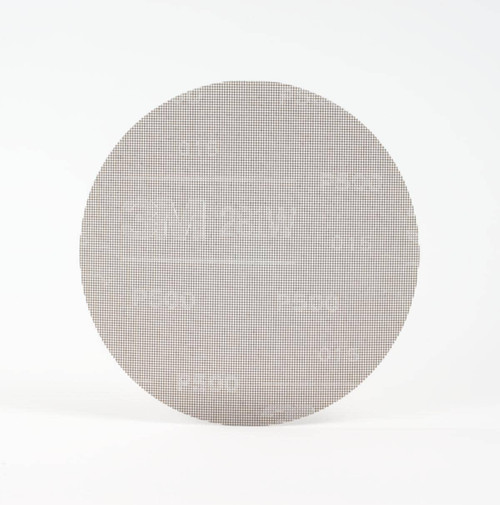-
Product Description
- A good alternative for compounds and lubricants
- Fast-cutting silicon carbide mineral leaves a consistent scratch pattern while reducing the need for heavy manual pressure
- May be used for paint prep
- Sands a variety of substrates, from metals to hardwoods
- Water-resistant polyester backing means cloth may be run wet or dry
Finish and Repair
3M Wetordry Cloth Disc 481W features silicon carbide – a mineral that is very sharp and commonly used for low-pressure applications such as paint prep. While it breaks down faster than aluminum oxide, silicon carbide produces a superior finish. Users apply light pressure to obtain a consistent scratch pattern that is often desirable for final finishing. One of its greatest features is its versatility – it may be used on a variety of substrates: metals, whitewood, softwood and hardwoods. 3M Wetordry Cloth Disc 481W is used with a disc pad holder, so operators can abrade the workpiece by hand.The Benefits of Cloth-Backed Discs
The cloth backing on this disc is a durable, water-resistant polyester screen. We engineer our 3M Wetordry products to include our proprietary waterproof cloth backing, which supports both wet and dry applications. Cloth-backed discs are known for their durability and flexibility; they're a good first choice when working with metal or for heavy wood stock removal. At the same time, these applications tend to produce a significant amount of dust, clogging the abrasive points and creating an inferior work environment. These effects may be minimized by sanding with water to rinse dust away from the workpiece and the abrasive surface.Some technicians like using the abrasive dry, because they can quickly inspect the work. With wet sanding, water is used as a lubricant. This keeps the abrasive clear of loading and can prolong the life of the abrasive.
3M Wetordry Cloth Disc
The 3M Wetordry Cloth Disc 481W is designed for finishing and prepping metal surfaces. This exact model offers a reliable solution for operators needing consistent results with minimal effort.
Its silicon carbide mineral provides fast cutting and a consistent scratch pattern, making it ideal for paint prep and surface finishing tasks. The 8 in x NH size fits standard disc pad holders for easy use.
Fast Cutting Silicon Carbide
Featuring a 320 grade, this disc uses sharp silicon carbide mineral for efficient material removal. It reduces the need for heavy manual pressure while maintaining a consistent finish.
This grade is perfect for sanding a variety of substrates, including metals and hardwoods, ensuring versatility across different projects and materials.
Durable Cloth Backing
The cloth backing on the 3M Wetordry Cloth Disc 481W is made from water-resistant polyester. This backing supports both wet and dry sanding applications, enhancing durability and flexibility.
Cloth-backed discs like this one are especially suited for heavy wood stock removal and metal work, providing a longer-lasting abrasive surface under tough conditions.
Wet Or Dry Use
This disc can be run wet or dry thanks to its waterproof cloth backing. Wet sanding helps rinse away dust and debris, keeping the abrasive surface clear and extending its life.
Some users prefer dry sanding for quick inspection of the work surface, while wet sanding offers lubrication that reduces loading and improves finish quality.
Pack Size And Format
The product comes in a pack of 25 discs per carton and 100 discs per case, making it suitable for both small and large-scale operations. The 8 in x NH format fits common disc pad holders for hand sanding.
This pack size ensures you have enough discs for ongoing projects without frequent reordering, providing convenience and consistent availability.
Categories
-
Shop All
- Abrasives
- Adhesives, Sealants & Fillers
- Automotive Repair & Restoration Kits
- Building Materials
- Cleaning Supplies
- Coatings
- Composite Resins
- Compounds & Polishes
- Electrical
- Electronics Materials & Components
- Films & Sheeting
- Filtrete Air FIlters
- Home & Office
- Medical
- PPE
- Signage & Marking
-
Tapes
- Anti-slip Tapes & Treads
- Barricade & Warning Tapes
- Bonding, Mounting & Transfer Tapes
- Cloth & Duct Tapes
- Electrical Tapes
- Filament Tapes
- Foam Tapes
- Foil Tapes
- Masking & Paper Tapes
- Office Tapes
- Packaging Tapes
- Reclosable Fasteners
- Sealing Tapes
- Specialty Application Tapes
- Tape Applicators, Dispensers
- Vinyl Tapes
- Tools







